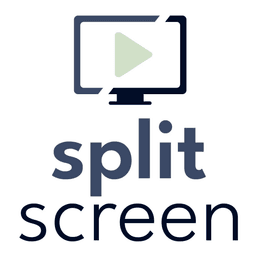How an Indian Entrepreneur Turned a $1,000 Mac App into a $92,000 Success Story


Business Description
Table of Contents
Navigate through the case study sections
Executive Summary
Case Study Content
How a $1,000 Mac App Became a $92,000 Win
Sometimes, the best opportunities are hiding in plain sight, small listings, easily overlooked, waiting for someone persistent to spot their real potential. That's what happened for Priyadarshan Joshi, better known as PD. He wasn’t a veteran in the world of apps, but he knew what he wanted after an earlier poor bet on a content blog. This time, in October 2014, he combed through Flippa’s marketplace with a clear purpose: find a simple MacOS app he could optimize and grow without deep technical knowledge or a big team behind him.
Finding Gold in Small Packages
Not every great deal gets a flashy homepage. PD noticed an app named Split Screen. It let users easily resize and organize Mac windows, a basic but handy productivity tool. The numbers? Humble. The app cost just 99¢ to download, brought in roughly $200 a month, and sat quietly on the Mac App Store while the seller held out for a $5,000 price. PD, thinking like an optimizer, believed that was too high. So he waited. The auction ended with no buyer.
Instead of walking away, PD made a bold offer: $1,000. He didn’t expect a ‘Yes, ’ but got one. Suddenly, ownership and admin access were his. The pressure? Only a little. The upside? All to play for. PD started mapping his next moves before the app could even warm up on his MacBook.
Small Changes, Big Results
First thing, branding. The old logo lacked any sort of shine, looking almost amateur. PD knew that even basic visual tweaks can build trust, drive curiosity, and get more customers clicking ‘buy’ on the App Store. He quickly designed a more modern, appealing logo using inexpensive freelance services. Compared to the crowded, often indistinguishable app icons in the Store, the new image stood out and immediately improved perceived value. Sometimes, design upgrades do more than clever marketing tactics or hacks.
Breaking Through Apple’s Rules
Then came the bigger challenge: Apple had changed rules on apps that control other apps (like window managers), blocking new functionality updates in the App Store version. But Split Screen, having been listed before the change, was ‘grandfathered’, no new competition, but also very limited changes possible. Most entrepreneurs would get stuck here. PD didn’t.
He built a new, ‘premium’ version with extra features Mac users would want. Since Apple wouldn’t let him change the original on the store, he developed a standalone, beefed-up app and launched it on a separate website. Smartly placed, a ‘How To Use Split Screen’ link inside the app’s preferences sent users directly to his website, converting traffic looking for help into sales for the $19.99 premium download. Users who paid less than a buck for the original now paid $19 for more power. No need for cold outreach or affiliate marketers, just building on the user interest already there. This single move multiplied revenue potential with almost no extra marketing overhead.
Data-Driven Pricing
PD didn’t set price by guesswork. He approached pricing with a spreadsheet and real numbers, raising the price in steps, tracking each week how many copies sold and what total revenue looked like. Originally at 99¢, he explored $1.99, $2.99, and eventually tipped the pricing scale at $6.99 per copy. That’s where sales volume and profit found their sweet spot, enough users to keep demand lively, but high enough price to make each sale matter.
This split testing mentality is often missed by solo founders. Instead of blindly following the herd, PD proved with clear evidence that his gut instincts, combined with data, could generate more profit than the original setup. Just tweaking price meant more money for every download, even before premium upgrades kicked in.
Building a Steady Revenue Stream
Over the next 5.5 years, Split Screen grew from a small $1,000 acquisition into a steady, reliable revenue stream. Bringing in a total of over $92,000, the app provided not just cash flow but validation. PD used the profit to invest in building out other MacOS productivity tools, slowly expanding his personal developer ‘empire’ and learning what users really want.
His story isn’t about raising millions or finding quick exits. Instead, he highlights how focus, discipline, and old-fashioned testing can rack up visible, life-changing wins. Running the business solo, he handled customer support, tweaks, and marketing directly. Each new customer was a real user, not a vanity metric.
Recognition and Next Steps
Split Screen’s rapid growth and smart tweaks earned PD recognition beyond sales charts. He entered (and won) the Mixergy Business Improvement Challenge, landing a trip from India to San Francisco, to spend time with business mentor Andrew Warner. These firsts, earning international validation, meeting heroes, and seeing a side project compete, became just as important as the profit numbers.
What Others Can Learn
PD’s main lesson? You don't need enormous resources to play in the software space. Small digital assets, when combined with smart design, strategic upgrades, and user-focused pricing, can beat out bigger rivals. His approach, think small, act fast, focus on the basics, and use user data as your guide, is replicable for nearly anyone willing to put in effort and test fearlessly.
- Look for overlooked software assets or products in niche markets, especially on sites like Flippa.
- Start with small but visible improvements like rebranding for credibility and trust.
- Find opportunities to create premium versions and drive existing users to pay for more through intelligent UX tweaks.
- Be scientific: test pricing and features, let user data shape your business decisions, and don’t be scared to iterate quickly.
- Reinvest profits into similar fast-moving experiments, expanding your own micro brand into something more sustainable.
- Always look for ways to keep evolving, adapting, and maximizing every dollar spent or earned. The big leap is often a series of steady, smaller moves.
Conclusion
Priyadarshan Joshi’s journey with Split Screen stands out as living proof that with the right moves, strategic low-risk bets can become life-changing business wins, no VC required. His method, rooted in fast action, small experiments, and care for users' real needs, can serve as a practical blueprint for aspiring solo founders anywhere.
Key Takeaways
- 1Smart acquisitions in overlooked niches can produce life-changing results with modest upfront investment.
- 2Quick wins, like updating a business's branding and improving UX, can significantly boost trust and conversions.
- 3When platform rules limit product evolution, creative solutions like launching a premium standalone version can open new profit paths.
- 4Systematic, data-driven price testing can uncover the most profitable balance between sales volume and price point.
- 5You don’t need a big team or outside capital to build a sustainable, profitable side project in software.
- 6Reinvesting earnings into additional products or improvements keeps growth steady and can help you gradually build a small empire.
Key Facts
Tools & Technologies Used
Premium Content Locked
Subscribe to access the tools and technologies used in this case study.
Unlock NowHow to Replicate This Success
Premium Content Locked
Subscribe to access the step-by-step replication guide for this case study.
Unlock NowInterested in Being Featured?
Share your success story with our community of entrepreneurs.
Explore More Case Studies
Discover other inspiring business success stories

How Repurpose Pie Turned Tweets into $75K ARR in Just 7 Days
Repurpose Pie is an automated content-repurposing tool that converts tweets into polished videos and posts across TikTok...
Repurpose Pie

How TikTok Ads Generated $570K in Five Days
Dylan Rudzinski identified a high-momentum TikTok trend and sourced a simple, low-cost product via Amazon Movers & Shake...
TrendPulse Shop

How Typogram Hit $5K Revenue with 100 Customers
Typogram transformed an idea for a pro design app into a simple, guided logo and branding tool for non-designers. By usi...
Typogram
